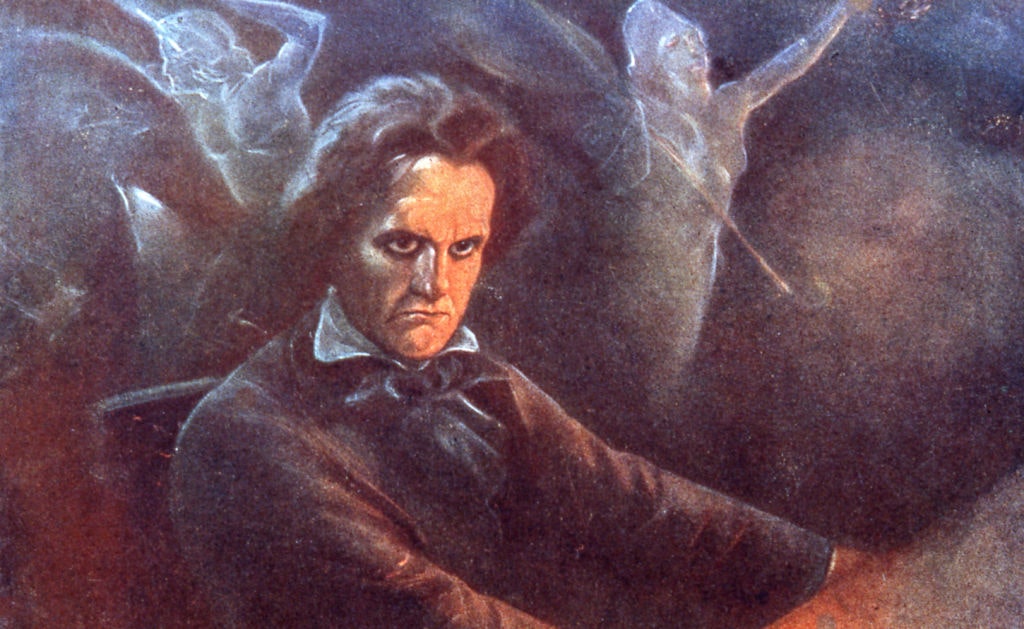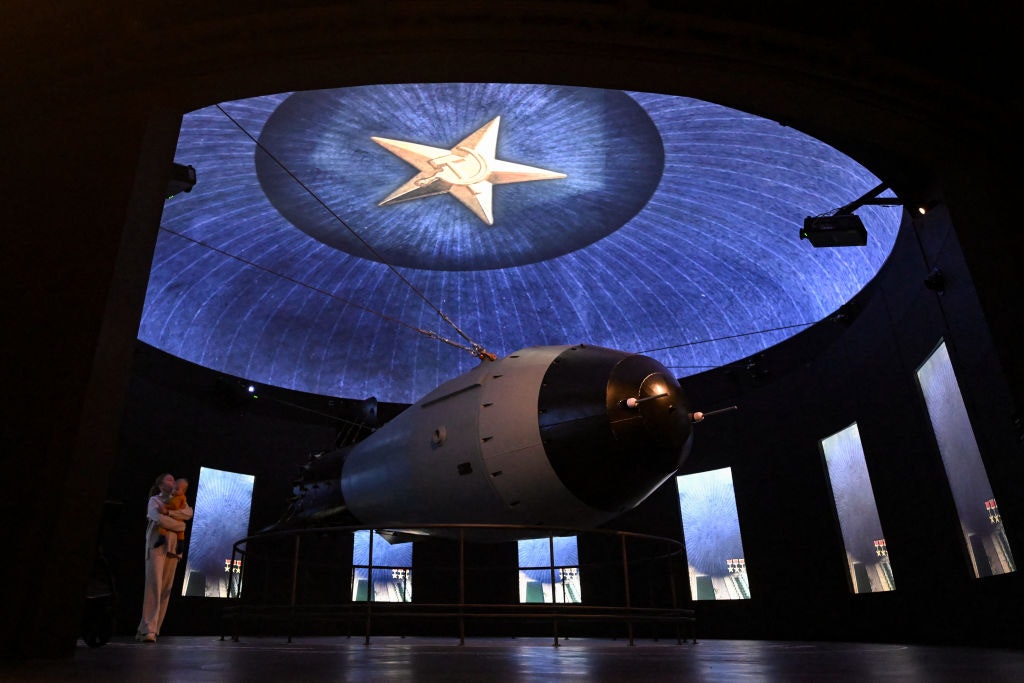An underground war
This history of resistance in the Second World War is as moving as it is comprehensive
A suspected resistance member is held in a small town jail somewhere in Vichy France, awaiting transfer to Paris and the Gestapo. That evening he escapes captivity, killing a guard in the process. As he flees through the gloomy streets, he spots a barber closing up for the evening. He enters and, attempting to conceal his nerves, asks for a shave. The barber goes about his business in silence; both men can hear the whistles of the police blaring outside as they search for the fugitive. The shave is over quickly — too quickly — and as he is about to leave the man hesitates on the threshold. The barber goes to the coat-stand and innocently offers him a fresh jacket. Newly-disguised, he slips out into the night.
This scene, from Jean-Pierre Melville’s film Army of Shadows, captures the human quality of resistance and reflects a basic, but oft-forgotten truth: resistance was an intensely solitary, intensely private act. Each resister confronted it as an individual. The drama of the war — the battles, the bombings, the speeches —collapsed into a series of judgements, calculations, and decisions of immense personal consequence and only tangential connection to the outcome of the war itself. Something as casual as offering a stranger a coat became laden with moral significance. It is unsurprising, then, that the existentialists — Camus, Beckett, Sartre — were all (to radically varying degrees) engaged in resistance work and all meditated on the conundrums of resistance in their writings. Resistance was applied philosophy.

But such sentiments were not limited to intellectuals. In Resistance: The Underground War in Europe, 1939-45, her new, and likely definitive, study of European resistance to Nazi occupation, Halik Kochanski unearths the voices of resisters across the continent. One Frenchman recalled it was “not easy to depict the loneliness, the chilling fear, the unending waiting, the frustration” of resistance work. Another remembered the enjoyable danger of the “game” of resistance, but felt it was played at one remove from reality: “the Germans became a sort of myth to us”.
What called these men and women to resistance? For some it was the “spirit of revolt”, for others the “thrill of feeling useful”. For many it was a gradual process of discovering the limits of their tolerance for political oppression. As one Dutch resister put it: “In the life of every person there are moments when he says to himself: ‘Tja, this won’t do.’ And then he does something”.
Kochanski’s book is a comparative study of resistance movements across Europe during World War Two — a vast undertaking, and a correspondingly vast book. It accomplishes its goal of ending the isolation that so many resisters felt. In its pages, resistance is a unified whole — but her study does not eradicate the differences between countries under occupation.
Why then did anyone in the West resist? The answer is that the majority did not
The major division was between East and West. The Nazis wanted Eastern Europe to be depopulated and the remnant population reduced to helots. Himmler believed that Polish education should be radically curtailed: “simple arithmetic, nothing above the number 500 … I do not think that reading is desirable.” The infamous Nazi “Hunger Plan” aimed to starve to death tens of millions of people east of the Oder River. Jews were to be killed wherever they were found. Nazi treatment of resistance movements in the Eastern theatre was correspondingly harsh. It was common for between 50 to 100 Poles to be executed for every German killed. Hans Frank, governor of the General Government, once wrote that “if I wanted to hang a poster for every seven poles that were shot, then all the forests in Poland would not suffice to produce the paper necessary for such posters.”
In contrast, Nazi officials in the West were adamant that “Polish methods” would be intolerable in France, Belgium, Norway, or the Netherlands. Consequently, the decision to resist was, in a sense, the most philosophically minded in countries where the occupation was lightest, such as Denmark. In contrast, those condemned to extermination felt as though they had little alternative. “We are fighting for three lines in the history books,” one Jewish resistance fighter in Cracow wrote, “to make the world know that the Jewish youth did not go like lambs to the slaughter.”
Why then did anyone in the West resist? The answer is that the majority did not. Most non-Jewish western Europeans did not want to risk their lives in a doomed struggle against a harsh yet tolerable occupation. But there were some common inroads into resistance work, such as helping downed airmen and fugitive soldiers. At a time when so many had relatives in the army or in captivity (some 1.5 million Frenchmen were held as POWs after the fall of France) it felt natural to offer aid to allied soldiers on the run. Indeed, most people didn’t even consider this resistance, simply common decency. When Eric Newby was hiding out in the Apennines he observed that many Italian women helped him in the hope that other women might help their sons on the Eastern Front should they find themselves in comparable circumstances. This naive faith that there was some ultimate ledger of war in which one debit of compassion might cancel out a corresponding credit of suffering is one of the most uplifting ideas to emerge from an otherwise relentlessly dispiriting book.
But it was self-interest that drew more people into the resistance. Fear of deportation to German labour camps forced hundreds of thousands of young men and women underground, creating a natural constituency for resistance work.
If and when Europeans found their way to the resistance, many were underwhelmed by what they discovered. Kochanski does a brilliantly entertaining job of exposing how amateur some of the early resistance networks were. André Dewavrin, Charles de Gaulle’s pick to run the French secret service, had no background in intelligence and drew on his love of spy fiction for inspiration. Dutch resisters in Rotterdam relied, quite literally, on putting messages in bottles and hoping they would reach Britain. What is even more surprising is that this worked on at least a few occasions.
Kochanski catalogues the more unsuccessful attempts too — from useless supplies, to traps, fancy dress, and one unfortunate man who spent months stuck in a cave system.
Only historical amnesia allows us to believe the sole motivation of the partisan movement was anti-Nazi
But even when resistance groups did engage in substantive work it raised troubling questions. Perhaps the most effective piece of sabotage of the war was directed at the Nazis nuclear programme. A key ingredient in this endeavour was heavy water — used for turning uranium into weapons-grade plutonium — developed at a facility in Norway. Norwegian operatives succeeded in destroying the Vemork complex in 1943, but this left 3600 gallons of heavy water intact. When SOE learned of plans to ship the remainder to Germany they decided to bomb the ferry transporting it across Lake Tinn. This was duly done in February 1944 and the sealed barrels of heavy water vanished into the deep, effectively ending Nazi nuclear ambitions. But the ferry carrying them was in civilian service. Fourteen Norwegians — including a three month year-old child — died. Subsequent intelligence demonstrated that with or without heavy water the Nazis were nowhere near acquiring the bomb.
We tell ourselves now that moral scruples had to be laid aside in order to defeat the great evil of Nazism. Yet this utilitarian calculus ignores the political diversity of wartime Europe. In those countries trapped between Hitler and Stalin, and riven with their own ethnic and political divides, there was not one enemy but a multitude. In Ukraine, the nationalist underground fought a spectacularly brutal, multi-front war against the Nazis, the Soviets, and the Polish which also included the massacre of Jews, the ethnic cleansing of Poles, and the assassination of Ukrainian moderates.
Ukraine was not unique. In Poland, Greece, the Baltic states, and across the Balkans, anti-Nazism, anti-Communism, anti-Semitism, and ethnonationalism combined in what one resister described as the “duty to kill.” Only historical amnesia and Stalinist whitewashing of the partisan movement has allowed us to look back at the astonishing variety of underground political organisation in this era and conclude that its participants were anti-Nazi to the exclusion of all other political ambitions.
Without acknowledging this key detail it is hard to understand why Putin obsesses over the subject of anti-Soviet Ukrainian resistance, why Medvedev accuses the Poles of ingratitude for not celebrating Russia’s “liberation” of Poland, and why Red Army war memorials remain lightning rods of political conflict across the old Soviet bloc.
Perhaps we need to believe that anti-Nazism took preeminence in order to justify in our own minds the terrible slaughter of those years. It is humbling, then, to meet in these pages people who even in the most extreme circumstances never stopped scrupling. People like Abba Kovner, of the Vilno ghetto resistance movement, who recalled that “as regards revolt, we cogitated more than anything else over the moral aspect. We were we entitled to do this, and when? Were we entitled to offer people up in flames?”
Enjoying The Critic online? It's even better in print
Try five issues of Britain’s most civilised magazine for £10
Subscribe














